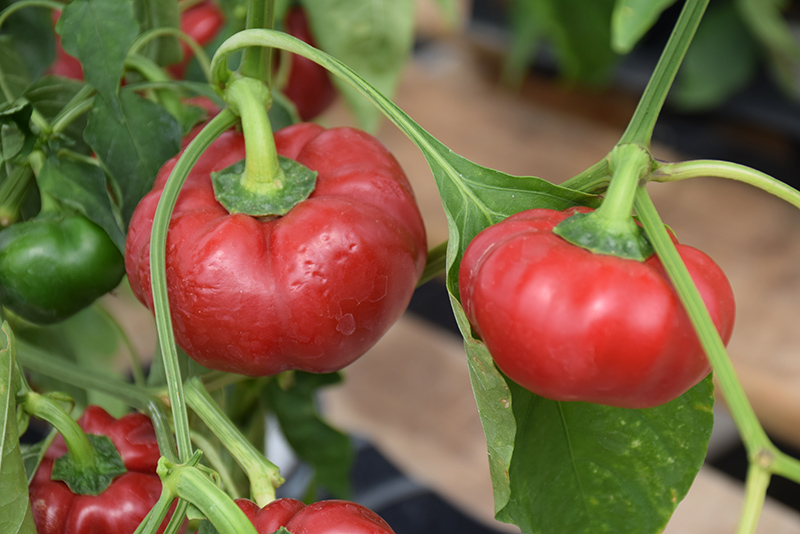Plant Library
Super Red Pimento Sweet Pepper
Capsicum annuum 'Super Red Pimento'
Height: 24 inches
Spacing: 18 inches
Sunlight:
![]()
Hardiness Zone: (annual)
Group/Class: Sweet Cherry
Description:
An easy to grow, tall and vigorous variety producing very high yields of large, flattened sweet peppers; develops from green to red; thick fleshed, mild and sweet peppers, perfect for canning, cooking and adding to salads; great for containers and gardens
Edible Qualities
Super Red Pimento Sweet Pepper is an annual vegetable plant that is commonly grown for its edible qualities. It produces green round peppers (which are technically 'berries') with red flesh which are typically harvested when mature. The peppers have a sweet taste and a crisp texture.
The peppers are most often used in the following ways:
- Eating When Cooked/Prepared
- Cooking
- Baking
- Pickling
- Canning
- Freezing
Planting & Growing
Super Red Pimento Sweet Pepper will grow to be about 24 inches tall at maturity, with a spread of 18 inches. When planted in rows, individual plants should be spaced approximately 18 inches apart. This vegetable plant is an annual, which means that it will grow for one season in your garden and then die after producing a crop.
This plant is typically grown in a designated vegetable garden. It should only be grown in full sunlight. It does best in average to evenly moist conditions, but will not tolerate standing water. It is not particular as to soil pH, but grows best in rich soils. It is somewhat tolerant of urban pollution. Consider applying a thick mulch around the root zone over the growing season to conserve soil moisture. This is a selected variety of a species not originally from North America.
Super Red Pimento Sweet Pepper is a good choice for the vegetable garden, but it is also well-suited for use in outdoor pots and containers. With its upright habit of growth, it is best suited for use as a 'thriller' in the 'spiller-thriller-filler' container combination; plant it near the center of the pot, surrounded by smaller plants and those that spill over the edges. It is even sizeable enough that it can be grown alone in a suitable container. Note that when growing plants in outdoor containers and baskets, they may require more frequent waterings than they would in the yard or garden.





